Table of Contents
Introduction
For a brief overview and non-audio opinions, refer to my first impressions on the AirPods Max.
Let’s get it straight first, I’m neither an Apple fanboy nor a hater. I hate macOS, love iOS, hate the AirPods, and am lukewarm towards the AirPods Pro. If a brand makes something good (or bad), I’ll give credit where credit is due. Regardless of existing reputation.
Despite what we audiophile snobs would like to believe, Apple is no amateur in the audio world. The original Apple earbuds was built with drivers sourced from Fostex, their devices once sported DACs from Wolfson and Cirrus Logic, and let’s not forget that they’ve literally pioneered (or at the very least, highly popularised) revolutionised the concept of “portable audio” with the iPod and its variants.
Sure, the EarPods (and the sonically identical AirPods) weren’t exactly good sounding transducers. And it really wasn’t until the AirPods Pro that people realised that they could make a decent earphone (after removing the headphone jack, of course). But now Apple wants to play a different game, from entertaining the masses and the prosumers to having their feet firmly planted into the hifi scene: a headphone that costs more than $500.
Yeah, I know. $500 is pretty much chump change to the ballers of the headphone hobby. For some, $500 is only enough to pay for the amplifier that powers their $1,500 headphone. But to everyone else, it’s a new frontier, a whole new world that the gods at Apple have opened their eyes to. And if anything else, I’m just happy that Apple would be normalising the concept of spending $500 a headphone, just like it normalised spending $250 on a true wireless earbud.
However, we’re not here to reminisce. Apple has entered the headphone game, and so now it’s time for the tech YouTubers to make way. As per usual, let them handle the other stuff: the build, the looks, the software, the convenience, whatever. In-Ear Fidelity is here to answer the question they skim over: how good does the AirPods Max sound?
Product page: https://www.apple.com/airpods-max/
MSRP: $550
Driver configuration: Dynamic
Foreword
If you’re not interested in the following, you can skip right to the next section using the Table of Contents above.
Self-introduction
So first and foremost, I’m sure there’ll be many reading this review who aren’t familiar with me or my work who would (understandably) be asking: who is this guy? Why is he calling himself an audiophile? Why should I listen to him?
Hello, I am known as “crinacle” and I run In-Ear Fidelity (IEF), a fully independent website dedicated to the “portable audio” scene of the audiophile hobby, mainly focused on headphones and earphones. I first started in the hobby in the late 2000s (the earliest official record being my Head-Fi registration in 2011) and started getting a reputation for myself only around 2016, with the IEF website being created in early 2019. In short, I’ve been in the hobby for a little over a decade, and been involved in the audiophile community for a little under that.
(Do note that the portable audio hobby is relatively young, so don’t expect your average “veteran of the hobby” to have “decades of experience” like with the 2-channel speaker world.)
Currently I maintain the world’s largest public database of frequency response measurements for headphones and earphones, and I also maintain highly popular ranking lists of (most of) said headphones and earphones.
This is my full-time job so one could call me a “professional” considering that, well, this is my profession. It is my job to keep up to date with the audio scene, provide my thoughts and opinions on various products and topics, and of course making sure that my measurements database don’t go obsolete by keeping it updated with new releases.
As for why you should listen to me… that’s really your call to make. On many occasions I’ve labeled myself as simply “a guy on the internet” because that’s really all I am: just one of the many voices out there in the world. And while of course nobody should take my word (or anybody else’s) as gospel, I do hope that you would take my opinions into consideration when contemplating a purchase. If anything else, at least just for audio-related concerns since that’s my specialisation.
Next up, some further clarifications on the concerns that people had after the publication of my initial impressions post.
Fit
Some have raised concerns over the fact that apparently mentioned in my “first impressions” article that the AirPods Max does not fit my head. I’d like to clarify that they do fit my head but “just barely”. I still get a full seal with no bass roll-off and nothing sounds like it’s broken or malfunctioning.
That said, I did figure out why the AirPods Max wasn’t very secure on my head. The mesh headband is not the grippiest thing in the world, so while the cups themselves may be properly sealed against my ears, large movements result in quite a bit of momentum for the relatively heavy AirPods Max and so I can feel the headband start shifting as I do.
Doesn’t really affect sound quality, as far as I can tell. But it is worth noting in terms of comfort and security.
ANC
I’ve said my piece in my initial impressions and they still hold true now. You can read it if you want, but I won’t be going into the weeds of it all in this review since I don’t really care about it, and also it’s not in my wheelhouse.
iDevice usage and features
I used the Samsung Galaxy Z Fold2 for my initial impressions, but this full review will be done on the iPhone 7 Plus (iOS 14.3). That should alleviate most doubts, but I still need to clarify a few extra things:
- The Adaptive EQ activates automatically. You don’t need to be on an iDevice for it to function.
- The Spatial Audio function only works on files with 5.1/7.1/Dolby Atmos audio enabled. It does not activate when normal music files are played and if it does, a prompt will show up stating so. I have not seen this prompt pop up during testing.
- Deep in the iOS settings, there is a “Headphone Audio” setting that allows you to tune AirPods devices to various profiles. I acknowledge this feature exists, but this will not be a factor in this review as it is exclusive to iOS only.
- The tuning/tonality of the AirPods Max will be the same regardless of what device you connect it to. More on that below.
Signature & Tonality
Compensated (IEF Neutral, top) and raw (bottom) measurements of the AirPods Max
Not sure how to read graphs? Click here
This review is based on the APM connected to the iPhone 7 Plus (iOS 14.3).
The AirPods Max (APM) has a signature that, depending on your perception of treble in general, varies between “downsloping response with a sub-bass emphasis” to “U-shaped”. Where a typical V-shaped headphone would have a general wide-band boost of bass and treble, the APM keep their emphases in the extremeties of sub-bass and upper treble, hence the term “U-shaped” to denote a more focused boost compared to “V-shaped”.
Arguably the best aspect of the APM: the bass response. Very well-controlled and focused boost down into the lowest octaves of bass, resulting in a good separation between the basslines and the rest of the melodic mix. Due to the sub-bass focus over mid-bass, the APM is not a punchy headphone and prioritises sheer rumble over bass tactility. Less “boom” and more “growl”, if that makes sense.
Overall, the APM is a very well-tuned headphone, even within the context of the “hifi audiophile” models. The upper midrange is a little tame for my own liking but it’s not to the point where it’s screws with the tonality and timbre of vocals and instruments (looking at you here, Audeze). Definitely more than acceptable for the mainstream crowd, and the average audiophile would probably be pleasantly surprised too.
That said, the aforementioned sub-bass emphasis doesn’t quite mesh well with the rest of the frequency response, and despite its lack of bleed it very clearly dominates the sound of the APM. If it were up to me I would probably try to EQ up the 2kHz to 6kHz to balance out the tonality (either that or drop the sub-bass, but that doesn’t really address the midrange), however as it stands I wouldn’t consider the APM as a “muddy” or “bloated” headphone.
One potential dealbreaker would be the treble response; I’m personally a little sensitive to treble so the APM is edging into “sharp” territory for me, though it’s not too much of a problem since it acts as a decent counterbalance to the bass response. But regardless, there is a certain “spiciness” to the upper frequencies that one may or may not be accustomed to, and considering that treble is probably the biggest make-or-break aspects of frequency response it is certain worth the caveat emptor mention here.
And, for the objectivist crowd out there, I guess here’s the comparison you all have been waiting for:
AirPods Max measurements compensated to Harman AE/OE 2018
Comparison courtesy of the Graph Comparison Tool
If one assumes that the Harman AE/OE 2018 target is perfection (I certainly don’t) then the APM deviates in two regards: having a smidge too much sub-bass and a recession in the upper-midrange. That matches my subjective impressions a little (for the upper-mids at least, no such thing as too much sub-bass /s) so if you’re looking for a headphone that matches Harman, the APM actually isn’t the worst headphone to get. The EQ profile required to get it to Harman should be relatively simple and should not create any odd distortion artifacts should you go that direction.
An additional clarification: your music player should not have any effect on the tuning of the APM.
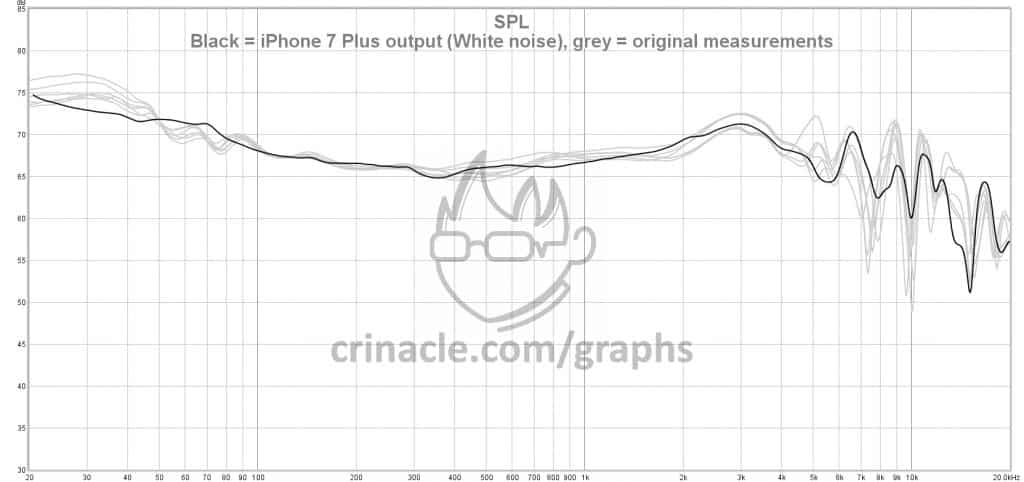
The black line (sample size: 1) represents the output of the APM connected to an iPhone 7 Plus (iOS 14.3) using linear-averaged periodic white noise. The grey lines are the original measurements (sample size: 6), connected to a Bluetooth connection through a Windows laptop using the Farina-sweep methodology used for the rest of my measurements database.
Apart from the differences in bass (which are due to the difference in measurement methodology rather than any difference in tuning or DSP on the transducer’s end), the overall differences observed are within the margin of error expected of typical headphone measurements due to placement variation, angling, clamp force etc.. So regardless of what device you use, whether it be Android or an iDevice, the final tuning of the APM should not be any different between devices.
TL;DR:
- Great overall tonality
- Well-controlled, bass-forward response
- Could use more upper mids
- Potentially sharp/spicy treble
Tone grade: A-
For more information on the grading system, click here
Technicalities
A headphone is not purely tuning; else we can just EQ the APM to sound exactly like a Sennheiser HE-1 or something.
Let’s talk stereoimaging (shortened as “imaging” among the audiophile crowd), something you would expect the APM to do well in considering all the talk about DSP, on-the-fly EQ adjustments and other high-tech magicks that is typically Apple.
The APM… doesn’t sound extraordinary. The soundstage isn’t particularly wide or spacious (though above average for a closed-back headphone) and the positioning of the instruments themselves aren’t impressive either. Look, it’s not bad per se but when the marketing goes out of their way to mention it, I (and I suspect many other people as well) expect a lot more. Currently, in terms of imaging, the APM performs on the level of a decent-ish closed-back. Just don’t expect the APM to sound as wide as a HD800 or as precise as an Utopia.
(As mentioned in the Foreword, the Spatial Audio function is impressive, but exclusive only to files with 5.1/7.1/Dolby Atmos formatting which are typically exclusive to videos and movies. For 99.9% of music listening, Spatial Audio is not active.)
Resolution and leading-edge transients are where the APM falls short. Again, it’s not bad per se but it performs more on the level of lower-end closed-back studio monitors like the Shure SRH440, the Audio Technica ATH-M50X or the Beyerdynamic DT770 Pro. Decent, but also nothing mindblowing. Enough to get surface-level detailing but foreground notes in the melody tend to smear over the nuances in the background, especially when the tracks get more complex.
In some circles, comparisons have been made against the Audeze LCD-2 and the Sennheiser HD800S. I’ll guess I’ll be the first to say: not even close. I won’t even bother elaborating.
A quick mention: the APM does sound marginally better on the iPhone 7 Plus than on my Samsung Galaxy Z Fold2. However, the changes are mostly in the intangibles (slightly better resolution, less note smearing here and there) and the tuning itself will not change from device to device as mentioned in the section above.
TL;DR:
- Acceptable imaging capabilities, but nothing beyond the realm of a typical closed-back headphone.
- Resolution is slightly above average.
Technical grade: C+
For more information on the grading system, click here
Valuation
A brief primer on my valuation system, I give out “awards” based on three merits:
★: “Worth the price”
★★: “Redefines the price bracket”
★★★: “Worth the Blind”
Here is the important part though, these are awarded purely on the basis of sound quality. After all, this is an audio-focused headphone review website, and as such the ratings are audio-focused as well.
But I’ll deviate a little for the sake of the “typical usecase” for the APM. After all, one does not buy an Apple headphone purely for sound quality, much like how one does not purchase an iMac for raw horsepower. Looking at the APM’s immediate competition, we have the two biggest ones: the Bose 700 ($350) and the Sony WH-1000XM4 (also $350). Effectively, the APM is a $200 premium over the two, so begs the question: can that be justified?
I will say this, assuming that all three are priced equally, I will pick the APM. I despise the WH-1000XM4 and find it muddy and bloated, which surprises me since Sony had historically been a leader in the audio market (I myself am a fan of their flagship IER-Z1R in-ear monitor). The Bose 700 is, IMO, slightly better than the XM4, but doesn’t really have sound quality that matches other similarly priced audiophile-centric headphones anyways.
While the APM may be similar in terms of detailing, resolution and imaging, I would consider it to be vastly superior in terms of tuning. Against the XM4, it’s bass heavy without affecting the rest of the instruments; against the 700, it’s “balanced” without sounding wonky.
Is it $200 better though? Not really. I could really see myself praising the APM if it were at the same price as its competition, but that kind of premium is far too hard to swallow right now. And considering that you would never see Apple products going on discount, its value just gets worse and worse as its competition get cheaper and cheaper.
(For reference, both the Bose 700 and the Sony WH-1000XM4 are going for $280 on Amazon. Effectively making the APM double the price of its immediate competition.)
At any case, in the context of the IEF rating system, $550 is far too high for the level of sound quality that the APM presents. Not worth the dosh if sound is your primary concern.
Value Rating: N/A
For more information on the grading system, click here
Conclusion
If you’re someone who is deep in the Apple ecosystem and are looking for a luxury, “high-end” wireless ANC headphone, the AirPods Max will probably have features and conveniences that would benefit you far more than the average person, and so this review would likely not be reflective of your own needs and wants.
However.
What I provide is, reiterating the title of this review again, the “Audiophile’s Perspective”. My ranking system only takes into account sound quality and audio performance, and nothing more. So if you’re expecting the AirPods Max to be a “do-everything” headphone, with “audio fidelity” being part of said “everything”, then I’m afraid that that’s the one thing that I’ll have to strike off that checklist.
The AirPods Max isn’t a bad sounding headphone, far from it. But if you’re buying one expecting $500 sound… maybe temper expectations a little.
Grade: B-
Awarded grades are in reference to the Ranking List.
Support me on Patreon to get access to tentative ranks, the exclusive “Clubhouse” Discord server and/or access to the Premium Graph Comparison Tool! My usual thanks to all my current supporters and shoutouts to my big money boys:
“McMadface”
“Olindrax”
Denis
Alexander
Man Ho
Will
Faheem


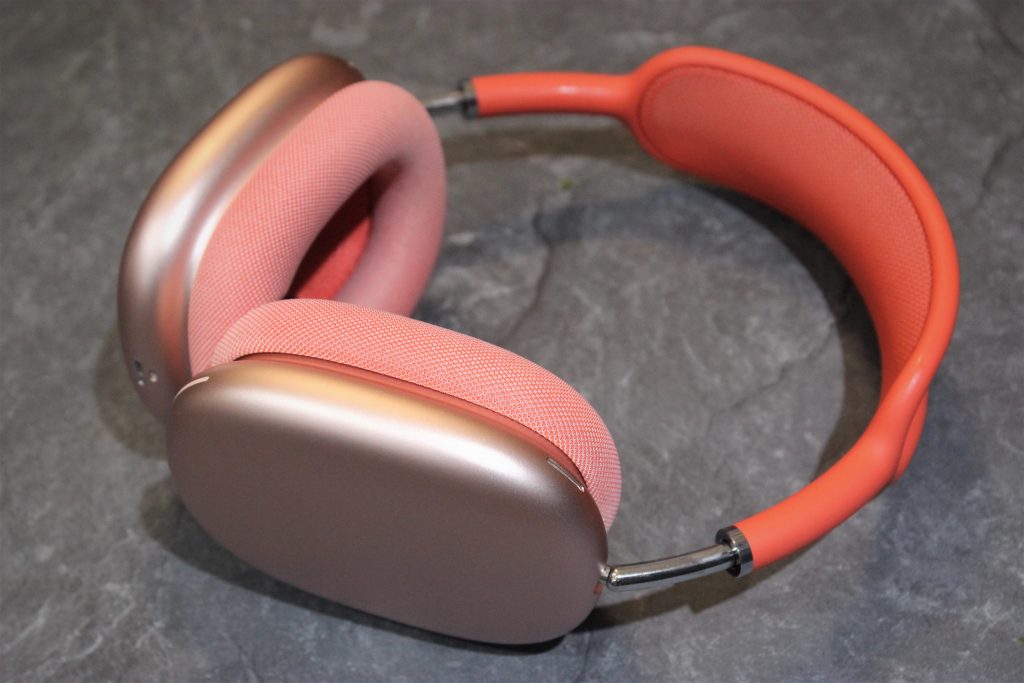
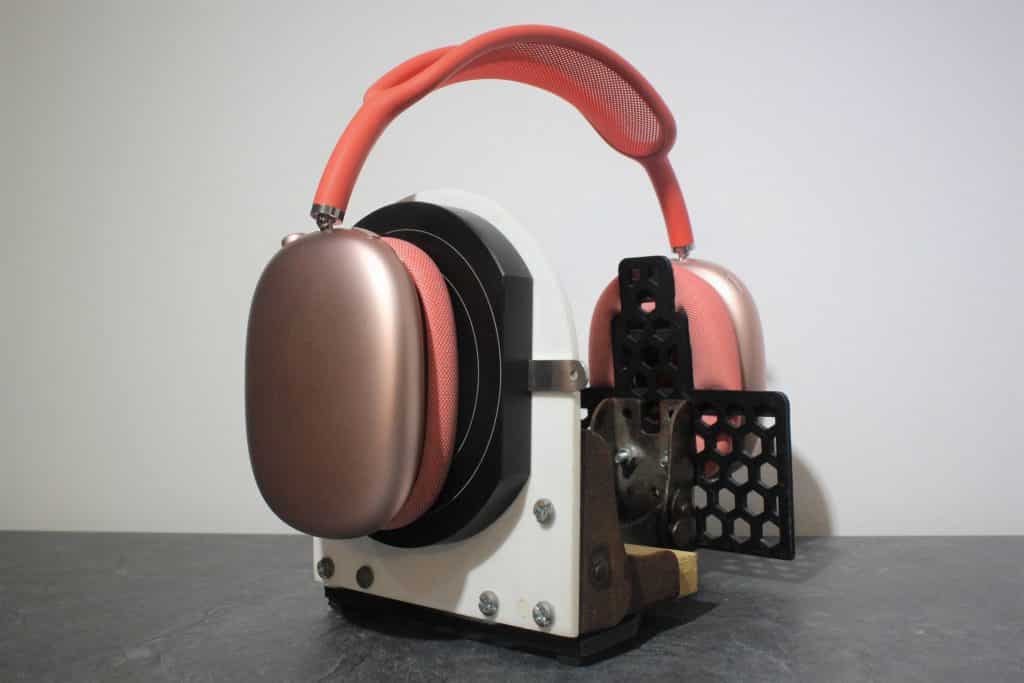
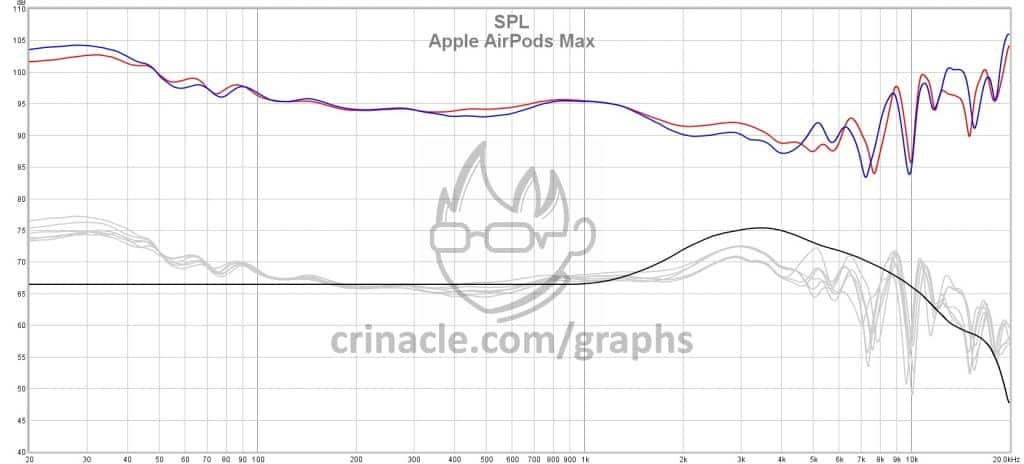

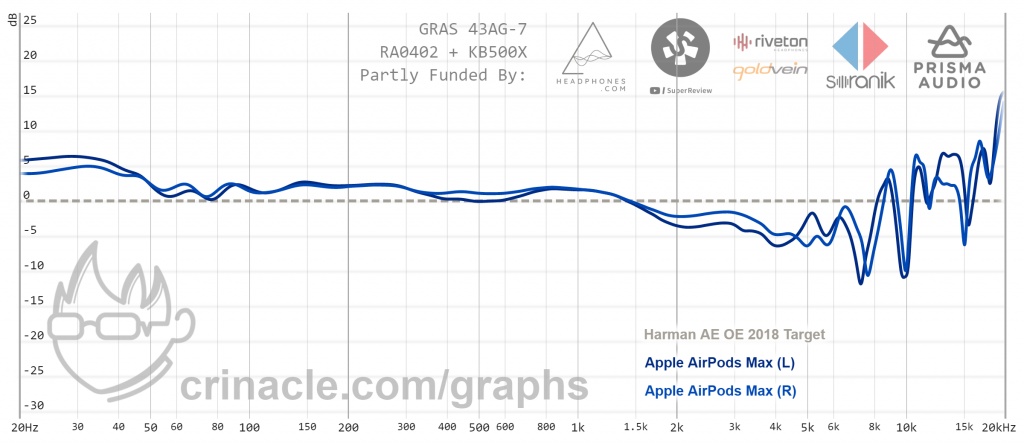
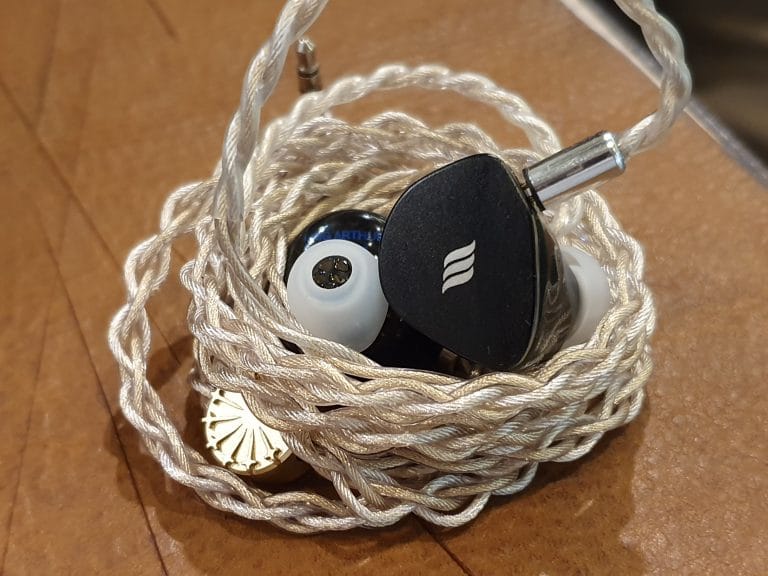
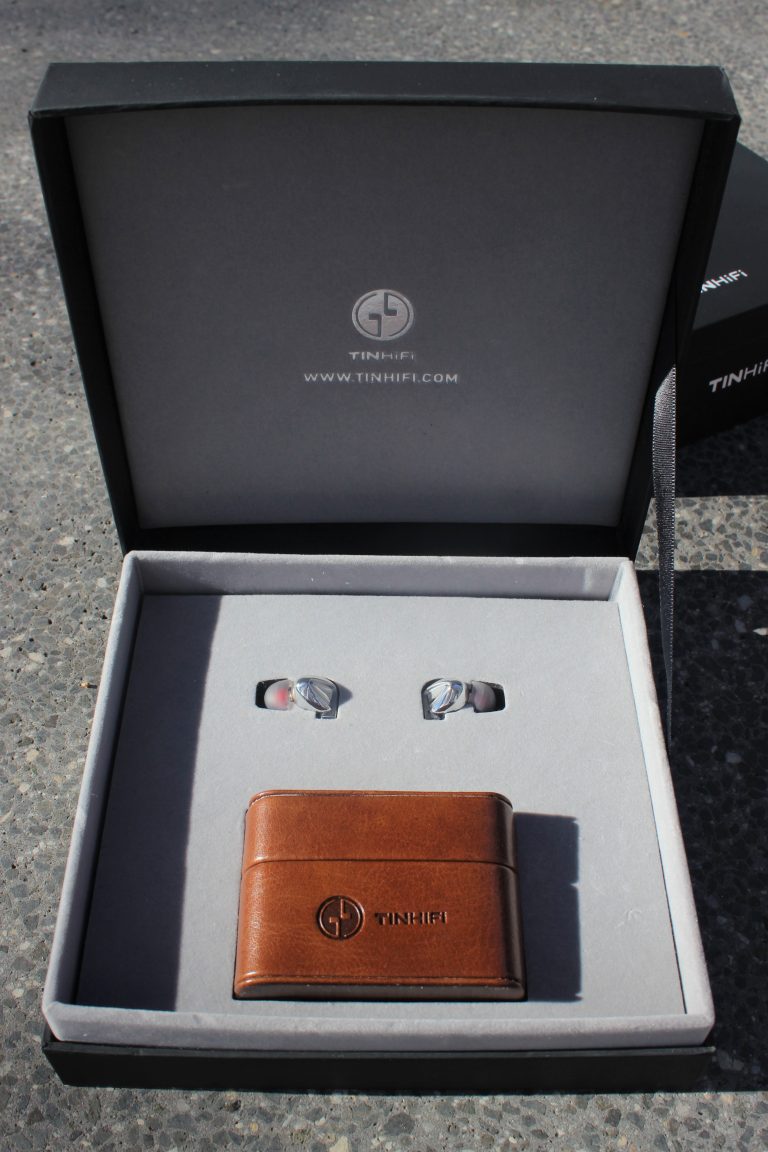
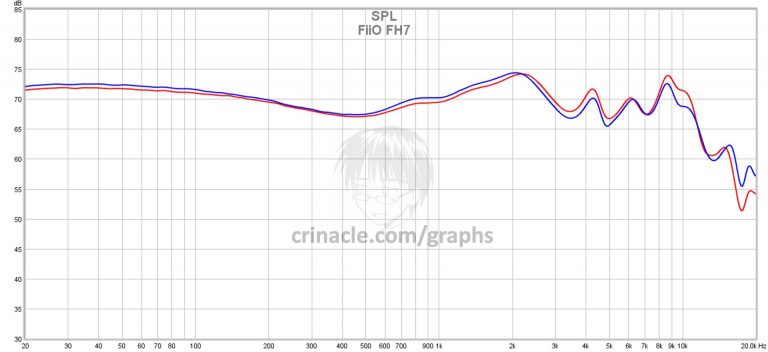
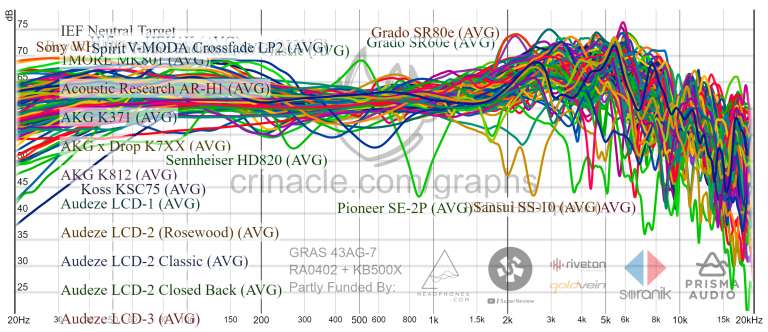


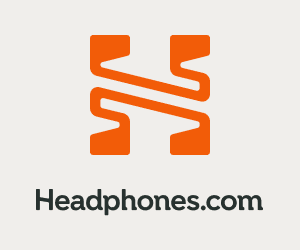
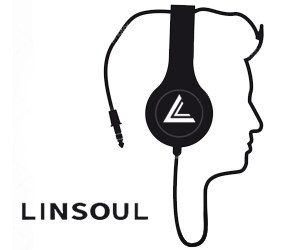

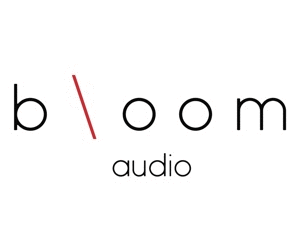
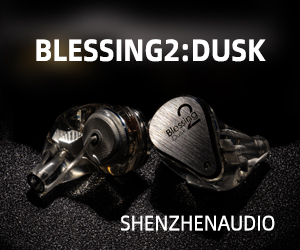
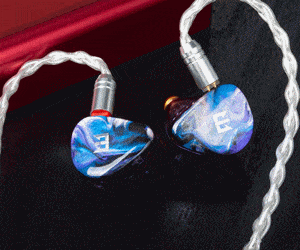

58 thoughts on “Apple AirPods Max Review: The Audiophile’s Perspective”
Fantastic review, and I agree 100% on the sound. I think it’s absolutely worth it though, for the following reasons:
1. The headband is a paradigm shift. I expect all higher end headphones to adopt a similar style, I’ve never experienced a headband that distributes (the considerable) weight better, it’s like a cloud.
2. Passive isolation is extremely good, and it’s still long term comfortable. On top of that, noise cancellation is slightly better than competitors. All in all it provides best isolation performance on the market.
3. The transparency mode is on a different level than any other headband product right now. Excellent implementation that is very true to live and feels long term comfortable and natural.
4. UI is super nice, stepless physical volume control is a must for audio enthusiasts.
5. Build quality is better than any other headphone.
The Airpods Max are class leading in basically every aspect except sound quality, and I absolutely support a company that is so good at product development that they build a best-in-class device on their first try. I’m super satisfied, even as an Android user.
Amazing review, just a few questions
The fact that these will be getting frequent software updates and the anc and overall tuning could end up improving make it any different from the headphones ever reviewed? should that fact be considered?
also why were they not compared with like the AKG K701 at $450 or the Massdrop x Koss ESP/95X at $450 too or any of the ~$500 ones? although I guess the ranking places it in range giving a fair comparison too but that would’ve been a bit more in it’s price range compared to the Bose 700 or Sony XM4
These are bluetooth headphones. Bluetooth is known to sound worse, and expensive. The sheer cost of the internal amp and dac, batteries, bluetooth module, noise-canceling microphones alone will cost over $150 itself. Designing the headphone to cramp all of these components into a chassis that is as thin as it is is also going to cost money. Not to mention the stainless steel headband and spring-loaded yolk system and aluminum cups… These should not be compared to similarly priced wired headphones. Wireless headphones have a category of themselves, and should be treated as such. Remember, you’re buying a wireless headphone for it’s convenience, not its sound quality. Nothing is perfect.
I totally agree. I purchased a soft drawstring bag to toss the headphones/smart case in. That will actually fit my backpack briefcase better than the Sony XM3 in case. Too bad they didn’t cost $450, but I didn’t need those two bottles of tequila anyway.
You mentioned everything but sound quality. So what you’re saying is that you would be perfectly content with purchasing a Mercedes Benz with a Ford Focus engine? Only because the Mercedes was made with better materials and superficial bells and whistles? Also, “Audio Enthusiasts” need more than a volume dial. It sounds like you value form over function disregarding the most important aspect which is sound quality.
“A quick mention: the APM does sound marginally better on the iPhone 7 Plus than on my Samsung Galaxy Z Fold2. ”
Do you think it might be a possibility that the sound would improve with newer model iPhones, given this? More processing power to handle AAC might improve resolution and transients.
Not really.
I have read that the encoder for AAC on Apple devices is much better than the one used on Android devices…
Apple devices are great at encoding AAC. That’s why it sounds a little better on the iPhone.
The encoding is done in hardware, so it can’t be updated. What may be updated in the future, though, are the headphones themselves. They, just like AP/APP, have a full-featured computer built-in running its own software and it will be updated over a Bluetooth connection with an iDevice.
I think the sound difference is due to AAC (search Soundguys “The ultimate guide to Bluetooth headphones”) and iPhone 7 is still on 4.2.
Generally speaking, Bluetooth 5 did not present new features or improvements to sound as such, but there’s definitely more bandwidth available and thus less compression/ higher bitrates.
So, yes, on a wireless connection, I’d expect newer iPhones to perform better.
No, I’ll give you the short answer:
Only the iOS version matters, as that contains the version of the AAC encoder they are using, with the newest version of iOS containing the most recent version of Apple’s AAC encoder of course.
AAC is not complex to encode, it’s meant to be efficient. A hardware bump will not increase the potential of the resolution, it’s limited only by AAC’s bitrate (the Bluetooth spec currently maxes out at 256 kbps on mobile devices) and Apple’s implementation of the AAC encoder.
This is why some older Android phones come with better Bluetooth AAC performance over newer Android, they’re using a better implementation. Practically no Android phone gets to the level of performance Apple can achieve with AAC however, as has been proven with objective measurements and subjective listening tests.
Newer iPhones come with newer versions of Bluetooth but for the Airpods Max’s that will only help with range and power usage. Previous versions of Bluetooth, such as the version used in the iPhone 7, had enough bandwidth that it did not limit AAC 256 kbps.
And yes, my name is James too.
Can you please explain the bit regarding bandwidth?
I read somewhere that AirPods Pro were limited to 256 kbps over Bluetooth, but your point seems to negate that.
If I have 320 kbps and Apple Lossless tracks on my iPhone, will I get the benefit of that with AirPods Pro? I supposed the real question to ask is if there will be a quality difference between my current wired EarPods and the AirPods.
Thanks!
Not many thoughts on these Air Pods Max. Except that is it really worth it to spend $550 on headphones to listen to streaming content with a Bluetooth connection? I think that at some point the overall gains in audio quality diminish quickly past what a Bose, Sennheiser or Sony offer. Granted taking nothing off from Apple obviously top end build quality. It also makes these headphones heavy. I know Apple loves to take an alternate path than the rest. But sometimes materials don’t work in practical terms. I am sure that Apple customers who will think nothing of spending $550 on headphones will find them perfectly fine. Those who value their dollar more may find cheaper options just as good.
I mean… I wear hifimans daily so my neck is actually more comfortable with AirPods max…
What do you mean “you mean”? Be more intentional with your speech.
What a stupid reply
Anyone know how the APM compares with the Beyer Lagoon anc? The Lagoon sounds the best to me out of all the wireless headphones I’ve heard, provided the personalised MIY EQ setting is applied.
@crinacle – have you heard the Lagoon? If not I recommend you try them, especially with the EQ settings provided by the MIY testing app.
It’s exactly what I expected it to be: a well-tuned headphone with “ok-ish” performance. It’s good, but the Apple tax prevents it from being a great value, especially with such a price discrepancy compared to other flagship consumer ANC headphones.
Great review, just the take I was looking for. I have been on the fence for a decent BT headphones. I almost pulled the trigger on Pandas and now I am glad I waited. Seriously considering these for my train commute (if that becomes a thing again next year). Would love to see how they stack up against Pandas. Don’t care for Sony or Bose offering.
I prefer warm signature like B&W P9s but then I love my Anandas so it all depends on my mood. Soundstage is something I care deeply about and hate claustrophobic headphones and that’s my concern with these. I can’t hear Senheiser HD6xx for too long because they are too narrow for my liking, maybe it’s just me.
Look forward to more deep dives of these headphones by audiophile community rather than usual techtubers.
Sounds like you should go for the B&W P7X, the sound stage is decent and if you have to use ANC it don’t ruin the music (as I find most others do).
Let us know what you think with the adjustable EQ,
Settings -> Accessibility -> AirPods -> AirPods Max -> Audio Accessibility -> Headphone Accomodations
Thanks,
This is the first time that I’m reading one of your reviews and I appreciate the mix of objective measurement and bluntly stated subjective opinion. That said, a couple of things confuse me:
First, you state that you “despise” the Sony XM4 and find the Bose 700 to be only “slightly better” — with “slightly” italicized for emphasis to make clear that it barely ranks above “despise.” Fair enough. And yet you don’t think the APM’s–which you seem to assess as “good, though not stellar”–are worth the price premium over ‘phones you either despise or close to it? Even at their discounted price, who would pay $280 for ‘phones whose sound they despised? I don’t know–in the world of audiophile audio, a premium of $250 to go from despicable sound to either good or even “not bad” is a bargain. So your conclusion didn’t make a lot of sense to me.
Second: I don’t know that it makes much sense to rank wireless headphones on the same standard as wired ‘phones. So long as wireless headphones are playing lossy, compressed Bluetooth audio, they will never measure up to similarly priced wired phones playing high rez uncompressed audio. I think we’re at or near the limits of what hardware or tech like “computational audio” can do to improve sound when the source, itself, is so compromised. I guess that an overall ranking that’s agnostic to wired or wireless does allow readers to place the ranking of wireless ‘phones in context, but it would be helpful to have wireless headphones ranked in their own category.
My conclusion is basically that all mainstream ANC headphones are overpriced if judged purely on the basis of sound quality.
As for whether or not one should rank wireless headphones with wired, I just do it because it saves me time and allows readers to see the big picture rather than being limited to a smaller segment of the market. It’s up to the reader to filter out that kind of data.
I totally agree.
I have top end wired gear but wanted good sound from bluetooth. I also have Sony XM4s.
Ridiculous to compare bluetooth cans to wired. So where is the competition for the Airpod Max.
Frankly there isn’t any. I love the Sonys but they are not in the same league.
Interestingly I read a serious audiophile review of Max and Panda. He preferred the Max.
Does anyone know how the APM compares with the Lagoon anc? The Lagoon is the best wireless headphone I’ve heard to date, provided the MIY sound personalisation is used.
Great review man, but the website is cluttered with adds… it’s difficult to read on my Tablet. Have you considered readjusting the positon of them so they aren’t so instrusive?
I just bought the AirPods Max and I compared them to the QC35II. Here’s my review:
Overall the AirPods Max do sound better in the sense that they’re more detailed and there’s a better separation of notes. Treble can sometimes be a bit piercing though but not as much as on the Bose 700. As everyone already mentioned, there’s a better soundstage on the APM. I think there’s too much sub-bass and it’s like if there’s constantly a mix of music with the sound of an engine. The mid range is slightly recessed kinda like if vocals are more in the background.
I prefer the sound signature of the QC35II. They sound a little bit less powerful but the mid range is definitely better on these headphones. The vocals sound more natural. Treble is a little bit lifeless compared to the APM. The QC35II are definitely more balanced overall.
To resume, the AirPods Max has better treble. The BOSE QC35II has better bass accuracy and much better mid range.
I can still return the AirPods Max but I’ll test and compare them a little bit more. I wish there were headphones as good as the AirPods Max with the sound signature of the Bose. That would be my dream wireless headphones. Hopefully one day Apple will release more balanced headphones with less sub-bass.
Also, Apple’s Airpods Pro sound more like the Bose than the Max
You made a technical error. You listened to it with a iPhone 7. This headphone is Bluetooth 5.0 in order to be able to get and hear the higher soundquality of Bluetooth 5.0 you need to listen it with a Bluetooth 5.0 player like iPhone 12 or their newest range of notebooks.. They all support Bluetooth 5.0 . Thanks for your impressive review though. That was a lot of work!
I’m sorry that you probably will have to do it all over again.
I have tested the AirPods Max very briefly with a 4th Gen iPad Pro. No significant differences were noted versus the iPhone 7 Plus.
Did you also test the APM wired?
Snazzy Labs (which refered to your frequency response charts) said in his review, that the quality seems to change.
He A/B tested that with 4 blindfolded people. Of 12 songs, 11 were correctly identified as wired or non-wired, which seems that it isn’t only a placebo.
I’d like to know your opinion about sound quality and soundstage, comparing wired and wireless.
Have a great week,
Maik
Interesting experiment that they did. Though even with the blindfold, the experiment could further increase its internal validity by adopting a longitudinal study. Who knows, maybe if the same participants did the blindfolded test again a week later, would there be any significant differences? If there isn’t, then you can be more confident in ruling out a stronger relationship between wired/wireless (IV) and perceived sound quality (DV).
Looks like it’s you who made technical error.
Do you really know the differences between BT versions? Read technical papers not a marketing bullshit.
There’s NO difference between bt4 & 5 if we talk about sound.
Doesn’t even seem worth it at all seeing as the AirPods Pro seem to offer a much better user experience and don’t need some shitty, inconvienent case to make sure it actually turns off.
You’re much better off just saving $200 and just buying the Sonys, even if you use Apple products. Especially seeing how DMS has said the spatial audio sucks on them due to their subpar imaging capabilities.
In reality though; ANC headphones are the lowest of the low. For the Apples to marginally be better at a 200 dollar price increase, it just seems to show how much of a joke the market is.
ANC phones are the lowest of the low?
With all due politeness, I must protest. When I’m mowing the lawn, I prefer either my Parrot Zik or Airpods Pro to any other solution I’ve come up with. Running ANC on the airpods pro under 3M earpro is usually a pain in the ass. However, with a quiet electric mower, the ANC can cover over the noise adequately to make listening to music while working pleasant.
This is a website that ranks solely based on sound performance. What were you smoking at this time?
Thanks for the review and the work you do, it has been helpful in making audio decisions in the past.
I’m wondering if you’ve seen Brian Tong’s APM review on Youtube? I know he’s not an audiophile or anything but he does bring up a point that I’m curious to hear your take on. Basically that every review is comparing APM to Sony XM4/Bose 700/Sennheiser Momentum/etc, all in the $250-350 price range, and then saying the APM are in fact better but not $200 better. But Brian Tong does an experiment recording all those headphones through a binaural microphone and, while not a perfect experiment by any stretch, it is really eye opening to hear the difference between those 250-350 options and the APM. The 250-350 cans sound like ass, comparatively. Like it’s not even close. He then does the same experiment using B&O H9 and H95 which are $500 and $800 respectively. In these tests the audio quality is much closer to each other, and while the H95 smokes everything else, the APM compares very favorably to them and to my ear still sounded better than the H9.
tl;dr: Shouldn’t most reviews be comparing $550 APM to more similarly priced options rather than to the $250-350 range options which are certainly more popular but are widely agreed to sound like ass compared to more expensive alternatives?
I think the sleeper hit is going to be the spatial audio feature. It’s being teased right now because you need to have the right source and the right device (recent iOS device) in order to use it, but I bet spatial audio can create some magical virtual soundstage effects, not to mention completely replace a 7.1 surround system.
I’d be interested to see a separate review for wired performance. As far as I understand, you can connect them to a Mac via a wire to bypass the Bluetooth compression, which could presumably change the entire ball game.
Great review, nice to see some reviews from proper audio folk rather than just tech bloggers coming out.
These sound very much up my street in terms of sound signature (currently have dt770pros and lover their sound), but mainly use hybrid IEMs with a somewhat if a V signature.
I’d definitely love to try these in the future if shops ever reopen so we can actually play with things again 🤣
Using the APM as wired headphones:
The Apple AirPods Max headphones are capable of being played from a wired source. The only mention of that fact comes from those reviewers who complain about the ‘audacious’ $35 connecting cable price – and that’s all they say. I hope sometime to read a review from someone who has plugged that cable into a ‘high res’ source like the Bluesound Node 2i .. Qobuz audio, with classical or acoustic music of various forms preferred. Have you tried that?
I very much look forward to trying USB to Lightning cables there, and seeing if they can be used as a wired digital-to-the-drivers style headphone.
Great thorough review! I just have to point out, referring to your introduction that the AirPods sound “sonically identical” to the EarPods, that this is absolutely untrue – the AirPods sound SIGNIFICANTLY better than the wired EarPods. I almost stopped reading this “audiophile review” after I read that line, but I pushed through nonetheless.
I think they have too much sub-bass and slightly not enough upper mid-range, exactly what the graphs show (data doesn’t lie, unless it’s captured incorrectly).
I’ll go with the Sennheiser hd600 for now. And believe it or not, the regular Apple EarPods track the HD600 and Focal Utopia frequency response curves identically — for $40. Only differences might be power of the speakers and driver size. Whatever that’s worth.
My quest for good ANC continues. I’ll stick with my AirPods pro for now. But increasingly I’m starting to believe that if you need ANC you should probably be wearing earplugs or earmuffs instead pf headphones until you get to a safe and quiet location for music listening.
According to RTINGS the treble isn’t just but but horrible. I’ll stick with my BOSE QC35II
Hi I’ll try to check back here. I have a new pair of these they work great with my ATV4K, etc., but I need Bluetooth transmitters for my Directv receiver’s optical outputs. Being that these headphones are AAC codec only (is that true?), do I have to be careful and specifically find AAC in the transmitters specs?
an “audiophile” testing with 256kbps AAC? I stopped reading at that point. Test them with master Tidal recording or FLAC then judge the headphones. Until then this review is an AAC and MP3 codec test.
Audiophiles do NOT always HAVE TO lossless audio to do testing and write reviews. At least for me, FLAC has the upper hand of sheer detail and instrument positional accuracy, but that doesn’t mean MP3 or AAC are practically unlistenable, useless, or unable to judge how good a headphone sounds.
Oh, by the way, AirPods (all models, including the Max) are unable to play FLAC files natively, because the H1 chip is currently unable to handle it. Go do your research FIRST before you post these comments.
(I didn’t mention Tidal HiFi, because I don’t use it, therefore, I am unable to judge)
This review is what I’ve been looking for. I think it is an honest and very fair review, and that is coming from someone deep into Apple since the //+ computer.
I even have a $300.00 gift certificate, and the price of these Apple headphones give me a bit of a pause on the order button. If only I could try them, but of course the Pandemic makes that unlikely in my area.
As the review points out the cost of these are sort of a drop in the bucket for true audiophiles. To be honest my current wired equipment is what would be called “mid-fi” not hi-fi, but I certainly can tell the difference in quality between my “mid-fi” equipment and and any BT headphone I have tried or owned.
Does anyone think Apple has made some kind of revolutionary BT technology that approaches even “mid-fi”. If so maybe I should take a harder look?
In the meantime, I will continue to rely upon my B&W PX7 headphones for BT/wireless use, and of course rely on my wired headphones, amplifiers/DACs for higher end sound.
Just curious if you did your tests with the different modes (transparency, noise cancellation, neither) on or off. I read another review elsewhere that says both transparency and noise cancellation make the treble sound more pronounced while you can turn both off and it is better sonically that way.
Are they good headphones? Yes……. if you don’t look at the price. Crinacle only tackled on the raw audio aspect of the headphones so in-case some of you guys are looking to the other aspects, here are some of my opinions:
1.) They are very uncomfortable to use— The earcups themselves are very comfortable, but the headband hurts like hell because it’s not secure at all. You shake your head a bit and it also moves on your head, and the mesh gets caught in your hair.
2.) They have mediocre ANC— I only use wireless headphones (have like 10 pairs lol) and I can confidently say that the APM doesn’t have revolutionary ANC. They’re just as good as the ANC of Bose Quietcomfort 2, a headphones that’s 4 years old.
3.) Connectivity is good… if you’re using AAC— AAC is basically the connection type that apple uses, and It pairs so seamlessly, and works so well when you use an IPad pro or an IPhone 11 with it. Tried connecting it with my windows 10 work laptop… BAM. Everything else just sounded like a dumpster-fire.
4.) Mic quality is surprisingly good… if again, you’re only using apple products— The audio and input quality of the headphones are good when you’re using an iphone or ipad, but not surprisingly bad when using other products with it.
I find these a bit strange. They’re a wireless ANC headphone, which tends to be a type people buy for use outside and when travelling (commuting by train, flying etc) and for which good ANC and ease of carrying tend to matter more than sound quality. But these are quite heavy with the case, the case doesn’t offer that much protection and as a travel use headphone they are not especially great (no IP rating either). If they’re bought for home use then do you really need ANC? Sound quality is excellent for a wireless ANC headphone but nothing special for a wired headphone, especially for $550 which can get you a brilliant pair of wired non-ANC headphones. If you want ANC wireless for commuting and flying you can get lighter, I’d argue more comfortable and more travel friendly alternatives for a lot less (the Bose QC35ii can be found quite heavily discounted now, and it remains an excellent choice for commuting and flying being lightweight, comfortable and with superb ANC). And the Apple battery life is very average by todays standards.
Clearly if you want Apple headphones or just light the style then none of this matters, but for others then I think you can get much better sound quality for the price, or get excellent ANC and better travel headphones for a lot less.
John,
These are expensive, but I think they’re probably the best sounding wireless headphones available. I am not sure the ANC is necessary, but I think it’s nice to have. I use alot of Apple products too, so the integration was a selling point for me too.
From the review: “I would probably try to EQ up the 2kHz to 6kHz to balance out the tonality”. How would you do that? What filters are required to do this?
Use auto EQ. Use wavelet if you are on android and if you are on PC, use Equalizer APO with peace. https://github.com/jaakkopasanen/AutoEq
Well, since I have an excess of Sweetwater gift cards, I can get them for a little more than 50% off. If I’m expecting a $300 sound realistically, I’m now not too worried about the whole buyer’s remorse thing. I was looking at the XM4’s, but I just think these will be a better fit, especially considering I’m already an Apple product user. Also, these will be for travel and everyday use and I don’t have the necessities to power a typical “audiophile” headphone, so realistically this is probably one of the better options taking into account the inevitable Bluetooth gimmicky-ness. Either way, I was looking for Bluetooth headphones and you have helped me find my way to my decision.
Terrible review. I dont even know what to make out of “their ANC is not good” – I dont know how is it possible because from my subjective experience of using Bose QC35II, Bose 700 and Sony XM3’s, the APM’s are in a league of their own – sound quality or noise cancellation. Again, lot of blah in the review, nothing of substance what so ever.
Also comparing wired headphones to bluetooth headphones and rating them on sound is utterly stupid. They have completely different audience.
Well, ANC affected people differently. I agree with you that I think APM ANC was superior to like Bose even the Xm4.
Just a little Behind the newly release Xm5.
But there is no way people can’t compare sound quality between BT headphones with wired to normal wired headphone. Of course they have different audience, but most audiophile guys also got their own ANC BT headphone to travel, they need to know sound quality as well.
These are simply the only wireless anc headphones that I think are good enough. The competition falls apart at higher volumes.